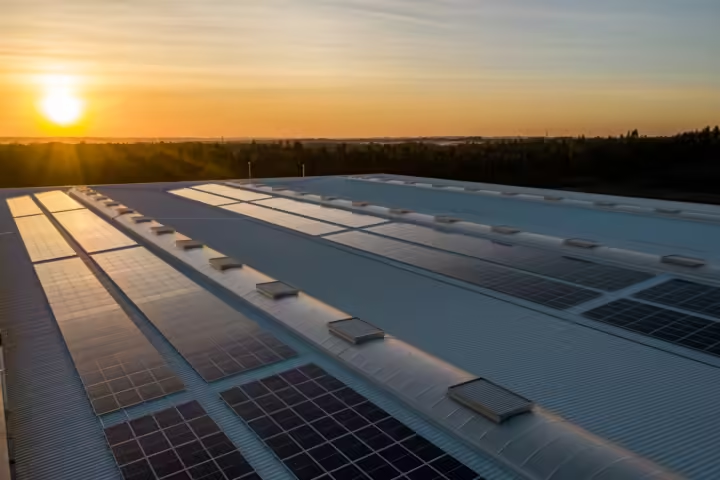Solar solutions have garnered significant attention as potential game-changers in the quest for environmental sustainability. This article explores the effectiveness of solar solutions in addressing environmental concerns and their role in shaping a sustainable future.
Understanding Solar Solutions
Solar solutions encompass a range of technologies that harness the power of sunlight to generate electricity or heat. From photovoltaic (PV) panels that convert sunlight into electricity to solar thermal systems that utilize solar energy for heating water or air, solar solutions offer versatile and renewable alternatives to traditional fossil fuels.
Advantages of Solar Solutions
Renewable Energy Source: Solar energy is abundant and inexhaustible, making it a sustainable alternative to finite fossil fuels. By harnessing the power of the sun, solar solutions reduce reliance on non-renewable resources and contribute to long-term energy security.
Clean and Green: Unlike fossil fuels, solar energy generation produces minimal greenhouse gas emissions and air pollutants. Solar solutions help mitigate climate change by reducing carbon dioxide emissions and other harmful pollutants, thus improving air quality and public health.
Cost-Effective: While the initial investment in solar infrastructure may be significant, solar solutions offer long-term cost savings by reducing electricity bills and providing a reliable source of energy. With advancements in technology and declining costs, solar energy has become increasingly competitive with conventional energy sources.
Challenges and Considerations
Intermittency: One of the key challenges associated with solar energy is its intermittent nature. Solar power generation is dependent on weather conditions and daylight hours, which can vary depending on geographic location and time of year. This intermittency necessitates the integration of energy storage solutions or backup power sources to ensure reliable supply.
Land Use and Aesthetics: Large-scale deployment of solar infrastructure, such as solar farms or arrays, may require significant land area and can impact local ecosystems and landscapes. Balancing the need for renewable energy development with environmental conservation and community concerns is essential for sustainable solar solutions.
Technological Limitations: While solar technology has made significant advancements in recent years, there are still technological limitations to overcome. Improving solar panel efficiency, enhancing energy storage capacity, and reducing manufacturing costs are ongoing areas of research and innovation in the solar industry.
Environmental Impact of Solar Solutions
Reduced Carbon Footprint: Solar solutions play a crucial role in reducing greenhouse gas emissions and mitigating climate change. By displacing fossil fuel-based electricity generation, solar energy helps decrease carbon dioxide emissions and contributes to global efforts to limit temperature rise.
Conservation of Natural Resources: Solar energy extraction does not require the extraction and combustion of finite fossil fuels, thereby conserving natural resources and minimizing environmental degradation associated with resource extraction and processing.
Biodiversity Conservation: Unlike conventional energy infrastructure, such as coal mines or oil wells, solar installations have minimal impact on biodiversity and ecosystems. Proper siting and environmental planning can further mitigate potential impacts on wildlife habitats and sensitive ecosystems.
Future Outlook and Opportunities
Technological Advancements: Continued research and development in solar technology are expected to yield further improvements in efficiency, reliability, and cost-effectiveness. Innovations such as perovskite solar cells, bifacial panels, and integrated solar solutions hold promise for expanding the adoption of solar energy.
Policy Support and Incentives: Government policies and incentives play a crucial role in driving the adoption of solar solutions and promoting renewable energy development. Supportive policies, such as tax incentives, feed-in tariffs, and renewable energy targets, can stimulate investment in solar infrastructure and accelerate the transition to a clean energy future.
Integration with Smart Grids: The integration of solar solutions with smart grid technologies enables more efficient and resilient energy systems. By leveraging advanced grid infrastructure, energy storage, and demand response mechanisms, solar energy can be effectively integrated into the broader energy landscape, ensuring stability and reliability.
DSG Energy, a part of the DS Group of companies, embodies the vision of contributing to Pakistan’s sustainable development by focusing on renewable energy solutions. Specializing in the power sector, DSG Energy is dedicated to promoting environmental sustainability through the implementation of solar solutions and other renewable energy technologies. With a comprehensive approach that includes consultancy services for both public and private sector projects, DSG Energy plays a vital role in advancing the adoption of clean energy initiatives in Pakistan.
Conclusion
Solar solutions hold immense potential as a sustainable and environmentally friendly alternative to conventional energy sources. By harnessing the power of the sun, solar energy offers a clean, renewable, and abundant source of electricity and heat.
While challenges such as intermittency and technological limitations persist, ongoing advancements in solar technology and supportive policies are driving the widespread adoption of solar solutions worldwide. As we strive to address the urgent challenges of climate change and environmental degradation, solar energy stands out as a beacon of hope for a brighter, more sustainable future.

















